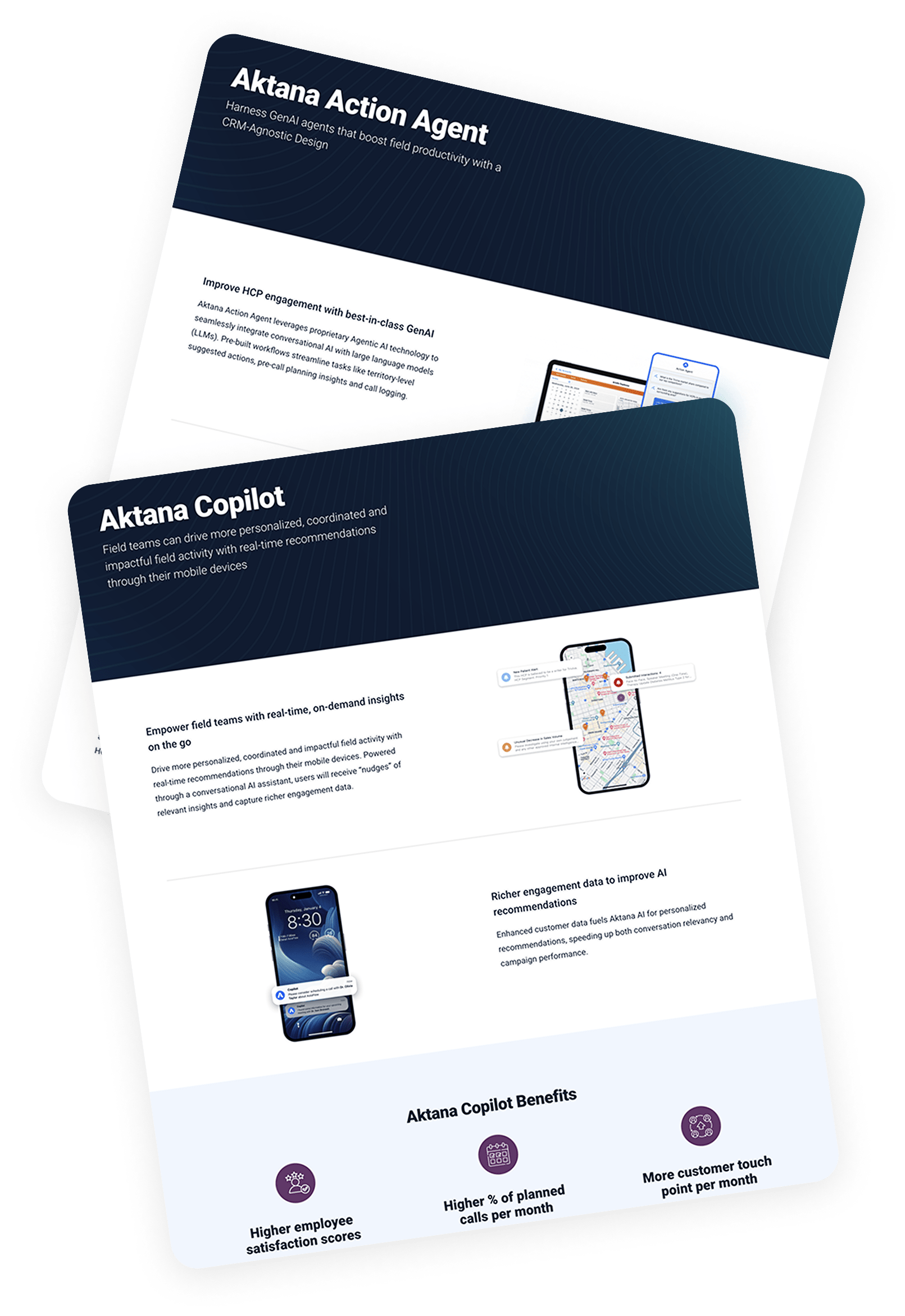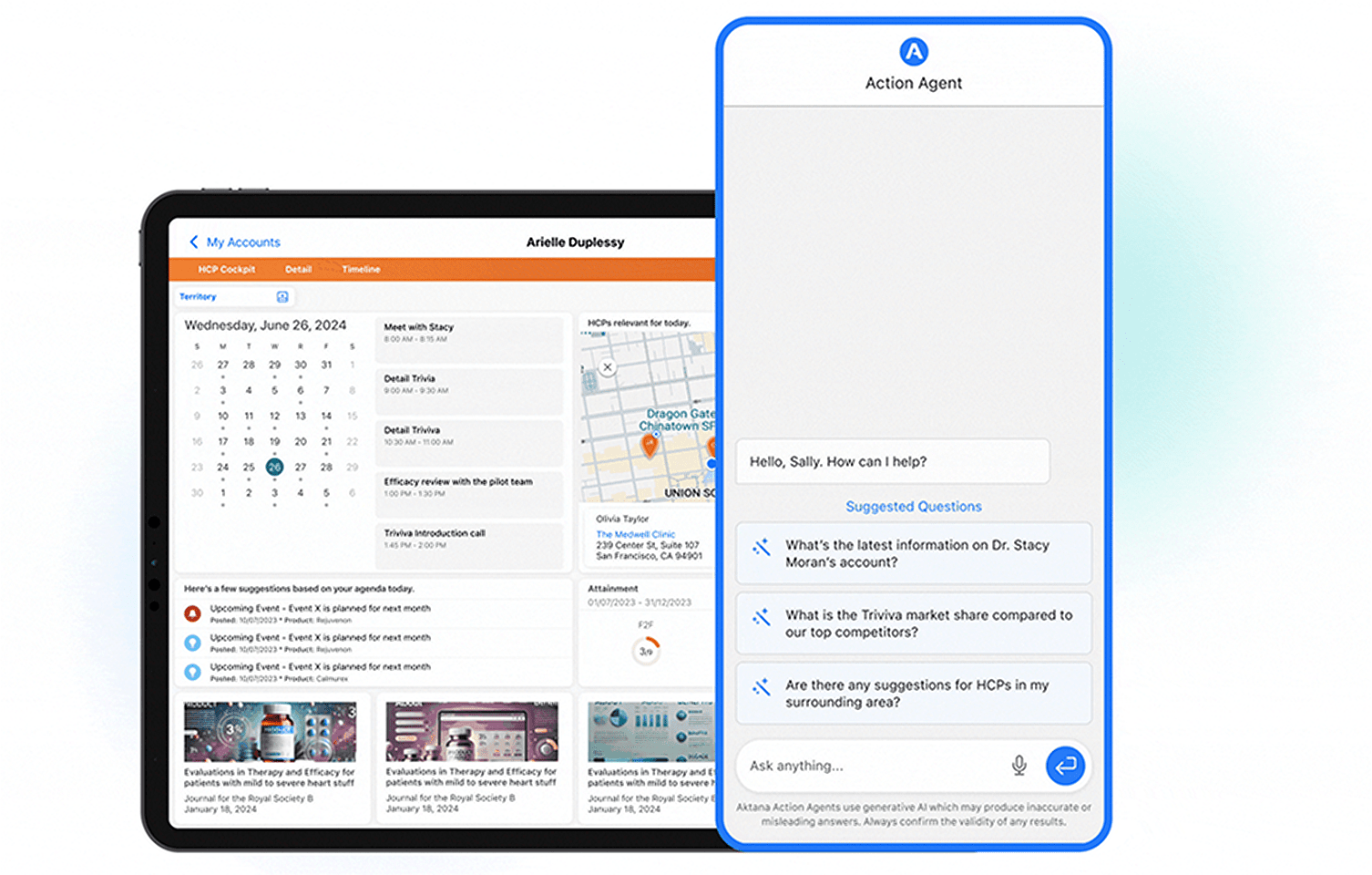Aktana
Sr. Director of UX

At the end of 2023, Tact.ai was acquired by Aktana where I continue to contribute to the mission of inspiring better patient care by designing intuitive, AI-driven solutions that help pharmaceutical and life sciences companies streamline their go-to-market strategies with precision and adaptability across the product lifecycle.
The impact of this work is evident: top global pharmaceutical companies using Aktana's solutions have achieved up to 22% increased operational efficiency and 6% sales lift within their first year of implementation.

